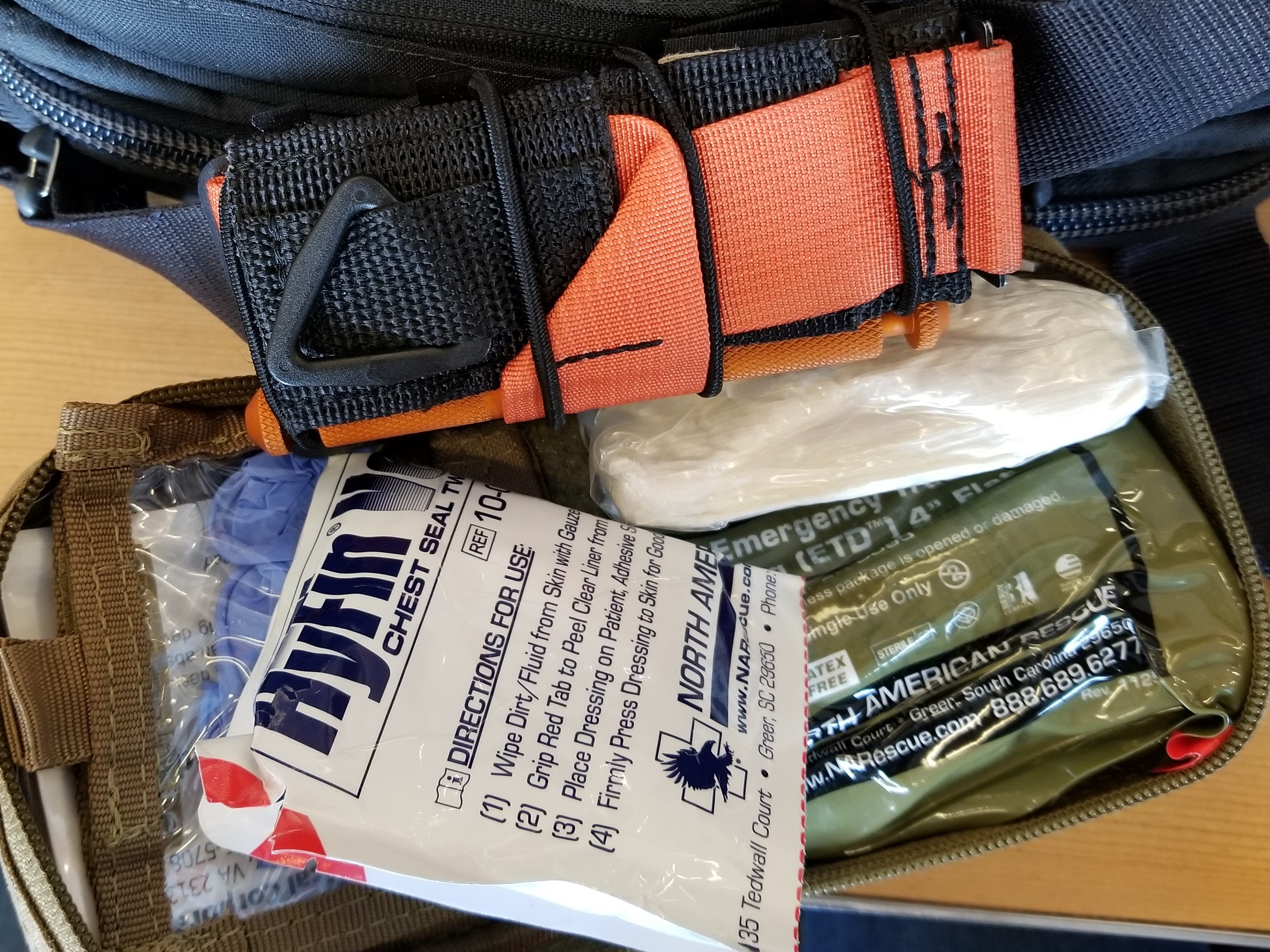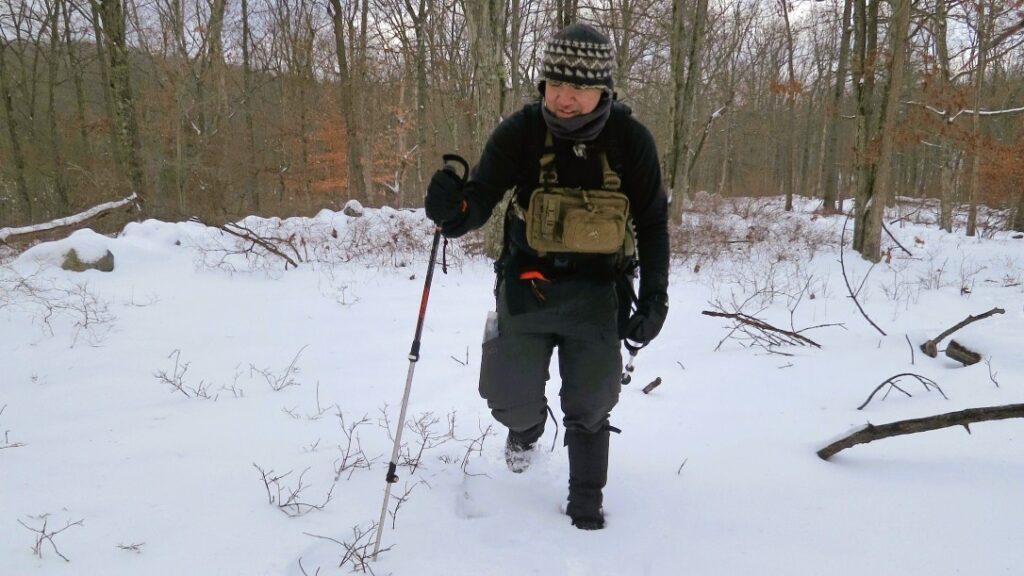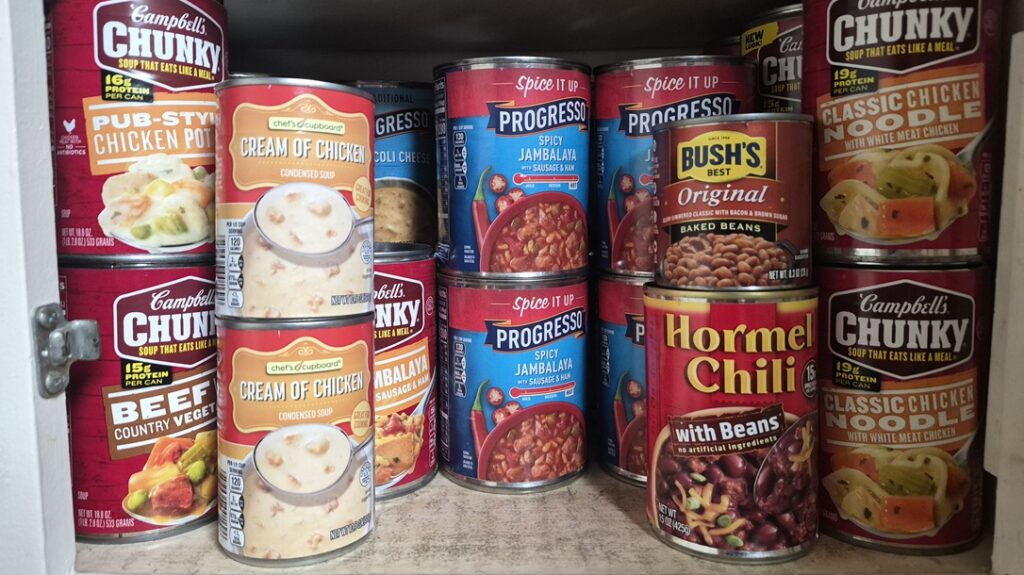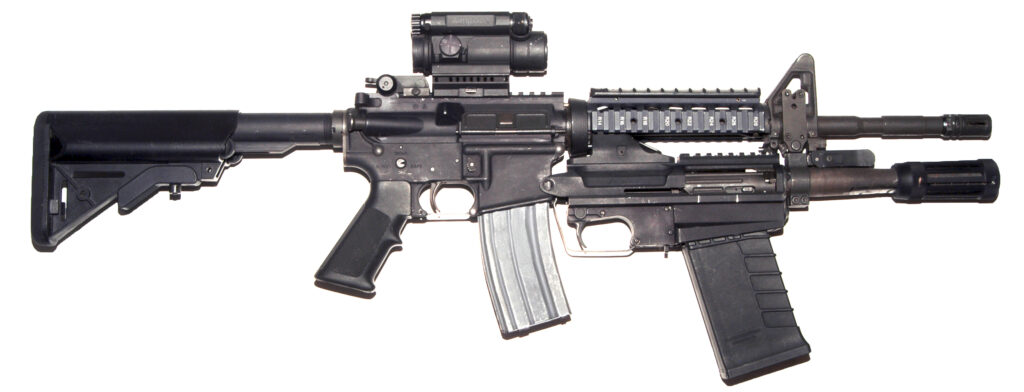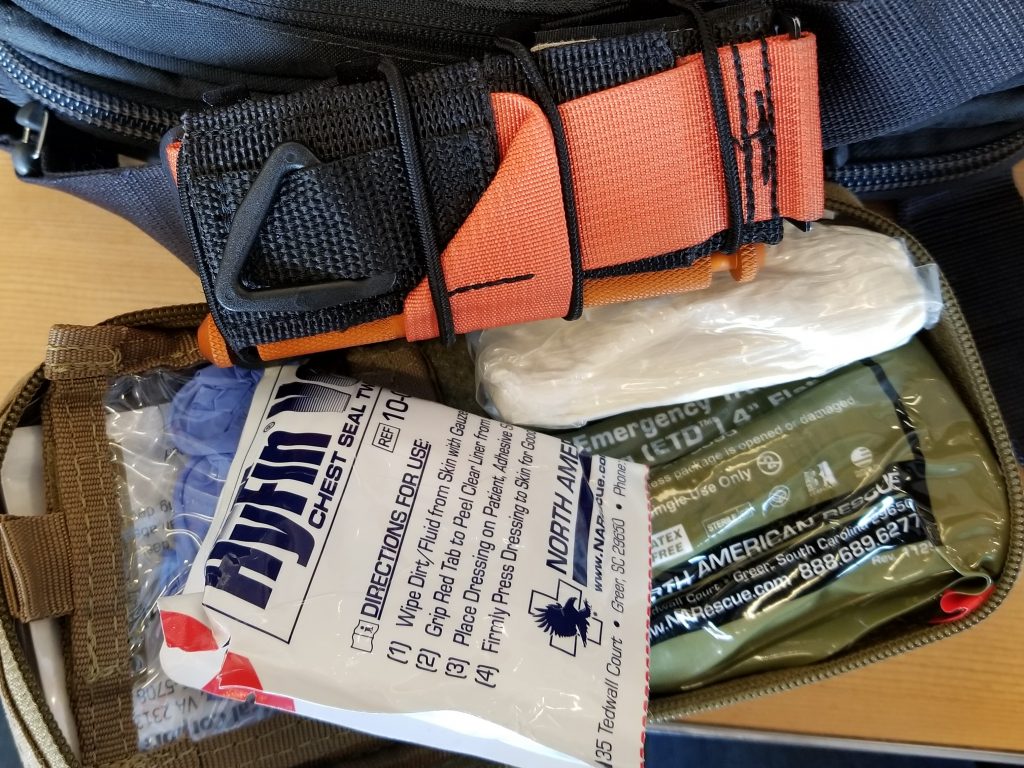
Medical is one of the hot topics in the self-defense training industry. With mass shootings, vehicle attacks on pedestrians, and other violent events in the news constantly, it’s becoming an increasingly popular topic everywhere else too. Carrying a gun or other weapons isn’t for everyone whether for legal or other reasons. Having the knowledge and tools for first aid? There are no restrictions on owning and carrying first aid supplies. You should join the crowds who are adding medical training and equipment to your life. Here’s why.
When Seconds Count…
It’s not just armed response that is minutes away at best. It’s also any chance of medical intervention in the moments that matter after a violent injury or even common yet major health events like allergic reactions, heart attacks, and strokes. If you are prepared to be the person on the spot in your fantasy of saving a crowd from a mass shooter, you should also be prepared to be the person on the spot with the higher likelihood event of an injury or illness that requires immediate help. The standard of care is fifteen seconds to get a tourniquet on to control massive hemorrhagic bleeding. And if it’s you leaking blood, you might want to get on it yourself.
Do Something!
Nobody likes to feel helpless. Interventions as simple as direct pressure can control blood loss long enough to make a difference. And even if it doesn’t, knowing how and being able to take action means you were able to try. You were able to do more than stand by and watch someone die. That’s not something I can live with, and it’s something you should think about before you skip yet another opportunity to take a first aid class.
Advertisement — Continue Reading Below
If I Can, You Can
One of the beauties of medical training is that many immediate first responder techniques can be easily learned by anyone. You don’t have to wait for a class to fit into your schedule either. A few minutes with a YouTube video can get you started. A quality in-person class like Bleeding Control is only a few hours and covers all of the basics.
Much of what’s useful for equipment is both affordable and easily carried. You don’t need to plan to improvise when a CoTCCC recommended tourniquet is $30 from a reputable supplier, can be carried in a back pocket, and is proven effective. My SOFTT-W goes almost everywhere with me and if I’ve figured out how to do that, a little creativity on your part will get you there too.
Sh!t Happens
It’s not unusual to focus on gunshot wounds as a leading cause for needing medical help right away. They’re not the only reason why first aid is needed in everyday life. Even in the sexy trauma first aid realm, where we get to use tourniquets, slap on chest seals, and shove hemostatic dressings into holes, there are many other reasons why we might have to get to work.
Advertisement — Continue Reading Below
How many of you work around heavy machinery? Factories are one thing, but limb-crushing injuries can happen at construction sites, warehouses, work yards…you get the idea. How about motorcycles? Even if you don’t ride, pay attention to who you’re sharing the road with on the next warm day. Now think about what might happen if a leg gets trapped between bike and car or asphalt. If a big piece of debris is kicked up by a passing car or flies out of a truck bed and spikes itself into a rider, or even a pedestrian.
And those are just the bloody injuries or the blunt force traumas. They’re not the only things that go wrong. For instance, do you have a child or co-worker who is allergic to bees, peanuts, something else? Anaphylactic shock is deadly, sometimes in minutes. Knowing where an Epi-Pen is and how to administer it can save a life.
IT SAVES LIVES
We’ve learned some hard-won lessons from the War on Terror, and we can respect them by not allowing people to die from preventable causes. In the Tactical Combat Casualty Care – All Combatants class I recently took, one of my instructors was living proof that what we were learning that day works. He couldn’t stand in front of us because both of his legs were traumatically amputated in Afghanistan. Two CAT tourniquets saved his life with minimal blood loss. His story is worth a few minutes of your time:
Advertisement — Continue Reading Below
https://www.facebook.com/StaythecourseIND/videos/1640661679283899/
After watching that, I couldn’t look Adam in the eye and not be a true believer in the value of quality medical training and equipment. How about you?
